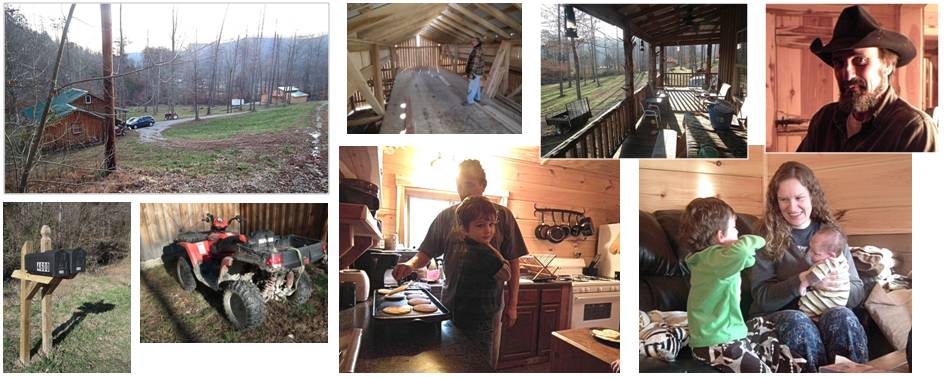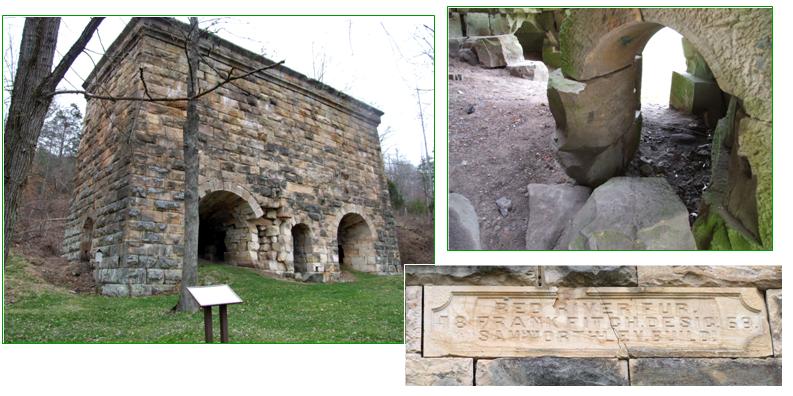 |
|
| Alan Machin: Tourism As Education Home page: blogs, introductions, links to main pages |
|
| Berlin: Editing a Townscape ... and reading a city that has had many rebuilders |
|
| Making Sense of The Travel Learning Experience- 1 1 Information Streams |
|
| Making Sense of the Travel Learning Experience - 2 Some basic theories |
|
| Back to Basics: Presentation given at the Cuba EduTourism Conference The CETA Conference in Havana, Cuba, 8/9 November 2010 |
|
| About the author Comments - CV - photos |
|
| Showcases At the heart of the tourist experience |
|
| Learning through Landscapes Exploring Oxfordshire (and a bit of Gloucestershire!) |
|
| The Environment As Data: Building New Theories For Tourism How tourists relate to places |
|
| Sail Gives Way to Steam A return visit discovers just how much has been achieved in this iconic restoration |
|
| Richard III and the Battle of Bosworth Reenactment Visits to Leicester and the battlefield event, 2013 |
|
| Along The Way Recollections and Reflections of 60+ Years' Learning about the World and its Ways |
|
| On the Edge of the New World Shaping New England |
|
| Flatland Exploring Holderness in East Yorkshire; October 2012 |
|
| Past Historic Graf Zepplin, Spain 1968, OS History, Much Wenlock Olympics, Chatham Dockyard, Hawes Tourism, Colonial Williamsburg, |
|
| A Summer of Travelling / Matthew Starr Three months' backpacking in Africa, Asia and Australia |
|
| East Anglia The Broads, Pensthorpe natural history, Radar Museum, Caister Lifeboat Service and more! |
|
| A Richer Earth Discoveries in the landscape and attractions of Shropshire |
|
| Blog Index Page Blog pages from 2009 listed |
|
| From Strip Map to Sat Nav 'Finding the way' aids to exploration |
|
| Showcasing the World How the Tourist Microcosm took centre stage |
|
| Doing A Dissertation Notes to help students preparing their proposals |
|
| The Japanese Tsunami Destruction at First Hand Sarah and Tom Wadsworth saw for themselves |
|
| Showcases: Examples The range and variety of tourism's focal points examined |
|
| Jigsaw: Frameworks of Knowledge The tourist jigsaw puzzle of - knowledge |
|
| Bibliography Books and other works useful in studying tourism as education |
|
| Tourism's Educational Origins: Part 2 The development of tourism as education, 1845 - |
|
| Tourism's Educational Origins: Part 1 Tourism's educational origins and management |
|
| Impressions of Tourism in Cuba Thoughts on having seen some of the country myself |
|
| Captain James Cook: North Yorkshire Days Tracing the early life of Britain's greatest maritime explorer |
|
| Hunting the Hound of the Baskervilles Tracking down places that inspired the famous detective story and moulded Dartmoor's image |
|
| Exploring the Idea of Dark Tourism What is it? Is it a useful idea? |
|
| Talking to Tourists Visitor interpretation - guide books, visitor centres and other media |
|
| Shades of Light and Dark in the Garden of England An exploration in East Sussex and Kent, June/July 2010 |
|
| Hunting the Gladiator and the Gecko A thirteen-year search for a wartime adventure |
|
| Steam Up For A Famous Film's Birthday Party The Railway Children weekend on the Worth Valley line raises questions about heritage presentations |
|
| Anne-Marie Rhodes: Making a Difference in South East Asia Leeds Met graduate of '07 describes her activities |
|
| Discoveries in Northumberland, April 2010 Alnwick Gardens; Winter's Gibbet; Holy Island, Cragside, Wallington Hall |
|
| Discoveries in the Midlands, March 2010 Bletchley Park National Codes and Cipher Centre; and the Rollright Stones |
|
| Alan Machin's Blog - April 2010 The development of tourism as education continued |
|
| Jigsaw Puzzle! The Adventure of the Timely Tourist |
|
| Leaders Into The Field People who inspired everyone to explore |
|
| Alan Machin's blogs - February and March 2010 Postings on the history tourism as education - redirection |
|
| Alan Machin's Blog - January 2010 Tourist photography and souvenirs |
|
| Earlier front-page blog postings - January 2010 onwards Archived after being on the Home Page |
|
| Bickering News from higher education and - beyond |
|
| The Development of Educational Tourism Key dates in the development of educational tourism |
|
| Alan Machin's Blog - December 2009 Christmas Quiz and other postings |
|
| Analysing Heritage Tourism Ideas and perspectives on a hugely important sector |
|
| Alan Machin's Blog - November 2009 Visitors' Views of Stonehenge, West Sussex - and other Postings |
|
| Are Universities Losing Their Way? Reflections having retired |
|
| Teaching Tourism At Leeds Met Remembering the Best |
|
| Alan Machin's Blog - October 2009 Thoughts about university life and discovery by travel |
|
| Alan Machin's Blog - September 2009 Further postings about a trip last month to the USA, and about higher education |
|
| Alan Machin's Blog - August 2009 Postings about a trip this month to the USA |
|
| Alan Machin's Blog - July 2009 The Story So Far reaches the summer |
|
| Alan Machin's Blog - June 2009 The Story So Far looks back on seventeen years at Leeds Met |
|
| Alan Machin's Blog - May 2009 Another month of The Story So Far |
|
| Alan Machin's blog - April 2009 Yet more of the Story So Far |
|
| Alan Machin's blog - March 2009 More of The Story So Far |
|
| Alan Machin's Blog - February 2009 The Story So Far - pioneers, people and places |
|
| Alan Machin's Blog: January 2009 The Story So Far .... first postings of '09 |
|
| Alan Machin's Blog: December 2008 The Story So Far .... latest postings |
|
| Alan Machin's Blog - November '08 The Story So Far.... continued |
|
| Alan Machin's Blog: October 2008 The Story So Far.... |
|
| No Place Like Rome The eternal city with the eternal tourists |
|
| Charleston, South Carolina A photo essay about a fine historic city |
|
| Idealog - December 2007 Ideas, notes and comments |
|
| Idealog - November 2007 Ideas, notes and comments |
|
| The Educational Origins of Tourism Discussion paper |
|
| Idealog - October 2007 Coton Military Cemetery; Education and Tourism; Chatham Maritime; Dickens World; Quiz Answers; Tourist Guides; Mediation In Tourism |
|
| Idealog - September 2007 Plane Paradox;Tour Guiding; Where in the World?; Do Tourism Students Know Where They Are?; Leeds Met's Wow!; Sea Harrier; Scarborough and Tourism As Education; Doing A Dissertation; Types of Tourist; A Media Lens; Cost of Travelling Alone; Risk of Bias? |
|
| Idealog - August 2007 A People Industry; Heritage Interpretation; Lud's Church; Tourists Go Home!; Stone Gappe YHA; Insight Guides; Eyewitness Guides; Bramhope Tunnel; Elizabethan Progress; Information Quality Matrix |
|
| Idealog - July 2007 Hidden Heroes, Health Tourism, Holme Fen Posts; Harrogate (again); Whitby Abbey; Dramatic Interpretation; Harrogate Interpretation, Attractions and Royal Hall |
|
| Idealog - June 2007 Christian Pilgrimage; Cincinnati Museums Centre; The Coming of the Guide Book; Talking to Tourists - Media, Stages of the Visit, The Service Journey; Tourism's Missing Link; The Final Call; SATuration level; Halifax's Edwardian Window on the World |
|
| Idealog - May 2007 Martin and Osa Johnson, Wensleydale Creamery, Malham Tarn, Thomas Cook, Northern Ireland's Tourism Rebuild, Jamestown Festival Park, Cite des Sciences |
|
| Idealog - April 2007 The Promenade Plantee, The Jardin des Plantes, Environmental Data, Victorian Beauty Spot Rediscovered, Jamestown, The Anglers' Country Park, Children's Museums, Fairburn Ings |
|
| Idealog - March 2007 A Sense of the Past- The 'Amsterdam', The Outdoor Classroom, Film-Induced Tourism, Making Tracks for the Coast and Country, Pictures, Context and Meaning, Classics-on-Sea, Hi Hi Everyone!, Dark Side of the Dream, Holodyne - The Action Cycle |
|
| Idealog - February 2007 Don't Go There!, Space Tourism, The Crystal Cathedral, New Books on Tourism, Dark Tourism - Undercliffe Cemetery, Showcase - The Louvre, A Class Act, First Impressions Count, Postal Pleasures, Canaletto in Venice, Serpent Mound, Capsule Culture etc |
|
| Idealog - January 2007 Capsule Culture,Seaside Style, Poble Espanyol, Mallorca, Edgar Dale, Children's Holiday Homes, Representations of Reality, Outdoor Education in Germany, Baedeker Guides, Geography Textbooks, Environmental Data Theory etc |
|
| Idealog - December 2006 Writers on Landscape, Story Books, The Deep, Flour Power and the Archers,Showcases: Grand Tour, Halifax Piece Hall, Books of Concern about Tourism, Tourist Traces, Tourist Typologies, The Growth of Educational Tourism, The Field Studies Council, etc |
|
| Idealog - November 2006 A blog of ideas, comments and notes |
|
| Travel To Understand: Belfast Telling the stories of troubled times |
|
| World Quiz 2010 Geography with a tourism angle |
|
| The Monterey Bay Aquarium An outstanding educational facility in California |
|
| Chicago: Tourism Re-Imaging A closer view of an iconic city |
|
| Colonial Williamsburg A Virginia history showcase |
|
| A Social Club Outing By Train, 1935 How to do Scotland in 30 hours flat |
|
| Going Dutch Presenting the past in the Netherlands |
|
| Keukenhof: Business is Blooming Using tourism to promote an industry |
|
| A View of Italy for the City Trentham Gardens Revived |
|
| A Case Study in Heritage Management A curious tale of misleading publicity |
|
| Old Rice Farm The story of the house in the 'holler' |
|
| Perfection in Paradise: The Eden Project New page being added: The Eden Project's design for success |
|
| Escaping From Slavery: Facing Our Past The US National Underground Railroad Freedom Center |
|
| Prague Tourist Shows Outstanding showcase attractions in the city |
|
| Retracing the Steps: Tourism as Education ATLAS Conference paper given in Finland, 2000 |
|
| Tourism and Historic Towns: The Cultural Key A background paper for a Council of Europe Conference |
|
| The Social Helix Visitor Interpretation as a Tool for Social Development, 1989 |
|
| Malta Residential, 14-21 Feb 2006 - Page 1 Reports and Pictures |
|
| Malta Residential, 14-21 Feb 2006 - Page 2 Photos and reports of Friday 17 Feb onwards |
|
| Malta Residential, 14-21 February 2006 - Page 3 Reports and pictures from Sunday, 19 February onwards |
|
| Tourism Alumni Reunion, 8 March 2003 Leeds tourism students reunion 2003 |
|
| World Geography Quiz 1 A test of your knowledge |
|
| The Adventure of the Timely Tourist The answers |
|
| Tall Ships Race 2010 Converged on Hartlepool A major event-based boost for tourism in the town |
|
| Plymouth: From the Tamar to the Sea Starting point for explorations round the globe |
|
| Plimoth Plantation A reconstruction of the Mayflower settlers' village of the 1620s on the north east coast of North America |
|
| World Geography Quiz 2010 - Answers Geography with a tourism angle |
|
| World Geography Quiz - Answers |
|
| Christmas Quiz 2009 - Answers |
|
| Oxford A day in the city including the Botanic Garden |
|
| Tourist Showcases Examples from around the world |
|
|
| Text-only version of this page | Edit this page | Manage website | Website design: 2-minute-website.com |








